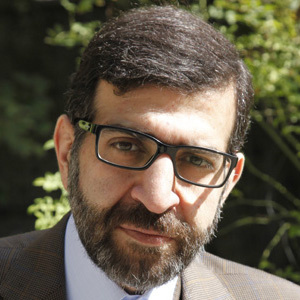And “God Liberated Khorramshahr”

On a crucial day in the ‘Sacred Defense’—the 3rd of Khordaad, 1361 (May 24, 1983)—the city of Khorramshahr was liberated by Iranian forces after a 578-day occupation by a vainglorious Iraqi army. Military and strategic significance aside, the liberation of Khorramshahr has now become a symbol of honor and pride for the Iranian nation—the pinnacle of what we call the ‘Imposed War’.
For Iranians, the liberation of Khorramshahr highlighted the distinction of two words in our vocabulary: resistance and freedom. More than being simply a military victory, the milestone was what amplified Iranians’ national confidence and guaranteed the stability and security of our territory thereafter. And the passage of time does not erode the significance of this story.
Wars are an inseparable part of the human condition. Few developments in the history of civilization have occurred free of war, defense of lands, persons and property, and the legends that surround them. The liberation of Khorramshahr, whether we look at it from a political or military perspective, was based on the ‘faith and wisdom’ of the Iranian nation and its leader at the time, Ayatollah Khomeini. Apart from the inherent virtues of faith and devotion, the quality of Iranian military initiatives also stunned the world. As such, the national, regional, and international ramifications of the military operation cannot be exaggerated.
The chain operations of Fat’h-ol-Mobin (the Manifest Victory), Tariq-ol-Qods (the Path to Quds) and Samen-ol-A’emmeh (the Eighth [Shiite] Imam) not only bogged down Saddam’s war machine, but also brought about new power relations in regional and international affairs. The outcome of the 24-day operation of Tariq-ol-Qods and sixty days of fearsome battle was more than nineteen thousand enemy captured, 16,500 injured and dead Iraqi soldiers, the liberation of Khorramshahr’s strategic port, the crushing of the morale of the Iraqi army, the liberation of the two strategic roads of Ahwaz and Khorramshahr, and the liberation of 5700 square kilometers of Iranian territory. Even what was an unholy alliance between the United States and the then Soviet Union (with respect to the war) was forced to acknowledge the power of the Iranian nation.
The victory at Khorramshahr tilted the political and military balance in favor of Iran, raised further awareness among the Iranians about the power of devotion to faith and to a cause, revitalized the strength of the Iranian Army and the Revolutionary Guards, and proved the efficiency of Iran’s military strategies.
The nation’s conscious presence and the capabilities of the Iranian military ensured Iran’s celebration of this stage of the war with a resounding victory. Upon defeat, Iraq (and its regional and international supporters) shifted their stance from military aggression to diplomacy and pleas for a ceasefire and peace. The events and circumstances of the post-liberation period need closer examination—an assignment for historians—but what we need to do now is remember those who sacrificed their lives for their country and their beliefs.

